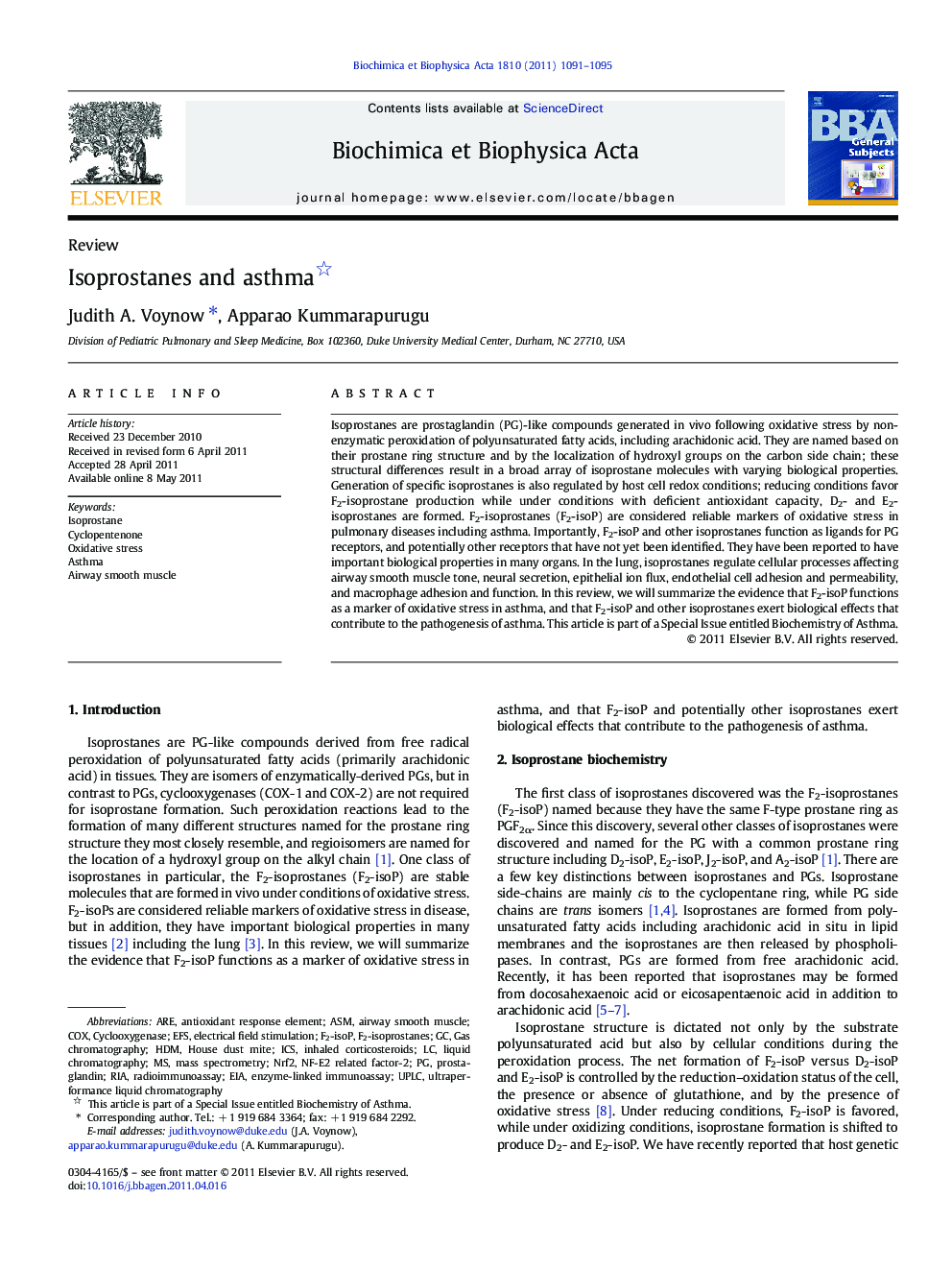| Article ID | Journal | Published Year | Pages | File Type |
|---|---|---|---|---|
| 1947828 | Biochimica et Biophysica Acta (BBA) - General Subjects | 2011 | 5 Pages |
Isoprostanes are prostaglandin (PG)-like compounds generated in vivo following oxidative stress by non-enzymatic peroxidation of polyunsaturated fatty acids, including arachidonic acid. They are named based on their prostane ring structure and by the localization of hydroxyl groups on the carbon side chain; these structural differences result in a broad array of isoprostane molecules with varying biological properties. Generation of specific isoprostanes is also regulated by host cell redox conditions; reducing conditions favor F2-isoprostane production while under conditions with deficient antioxidant capacity, D2- and E2-isoprostanes are formed. F2-isoprostanes (F2-isoP) are considered reliable markers of oxidative stress in pulmonary diseases including asthma. Importantly, F2-isoP and other isoprostanes function as ligands for PG receptors, and potentially other receptors that have not yet been identified. They have been reported to have important biological properties in many organs. In the lung, isoprostanes regulate cellular processes affecting airway smooth muscle tone, neural secretion, epithelial ion flux, endothelial cell adhesion and permeability, and macrophage adhesion and function. In this review, we will summarize the evidence that F2-isoP functions as a marker of oxidative stress in asthma, and that F2-isoP and other isoprostanes exert biological effects that contribute to the pathogenesis of asthma. This article is part of a Special Issue entitled Biochemistry of Asthma.
Research highlights► Isoprostanes are non-enzymatic peroxidation products of polyunsaturated fatty acids. ► F2-isoprostane, a stable biomarker of oxidative stress, is increased in asthma. ► Isoprostanes activate receptors to regulate airway and immune functions in asthma.
